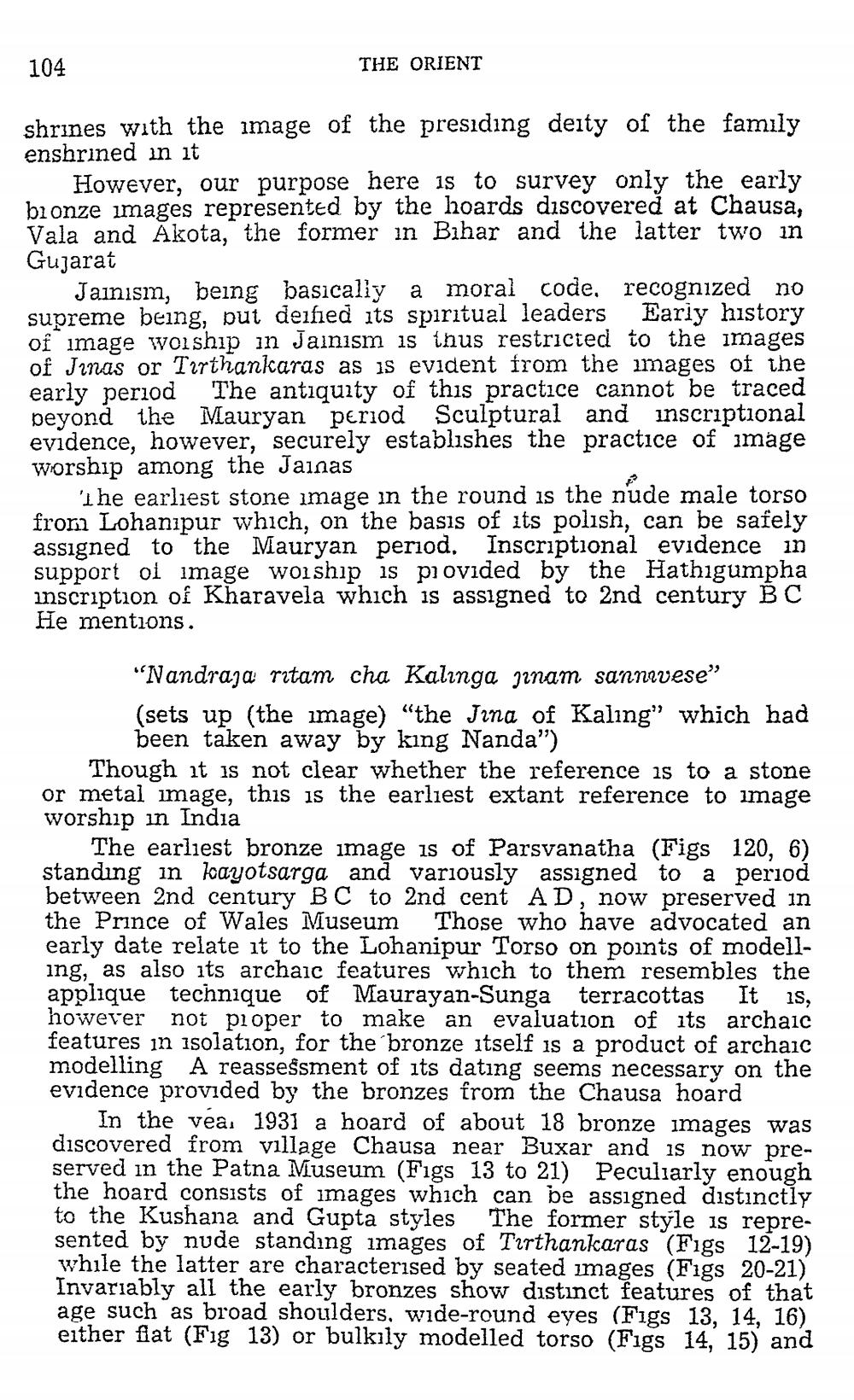________________
104
THE ORIENT
shrines with the image of the presiding deity of the family enshrined in it
However, our purpose here is to survey only the early bionze images represented by the hoards discovered at Chausa, Vala and Akota, the former in Bihar and the latter two in Gujarat
Jainism, being basically a moral code, recognized no supreme being, put deified its spiritual leaders Eariy history of image woiship in Jainism is thus restricted to the images of Jinas or Tarthankaras as is evident from the images of the early period The antiquity of this practice cannot be traced peyond the Mauryan period Sculptural and inscriptional evidence, however, securely establishes the practice of image worship among the Jainas
The earliest stone image in the round is the nude male torso from Lohanipur which, on the basis of its polish, can be safely assigned to the Mauryan period. Inscriptional evidence in support of image worship is provided by the Hathigumpha inscription of Kharavela which is assigned to 2nd century BC He mentions.
"Nandraja ritam cha Kalinga ginam sannrvese" (sets up (the image) "the Jina of Kaling' which had
been taken away by king Nanda") Though it is not clear whether the reference is to a stone or metal image, this is the earliest extant reference to image worship in India
The earliest bronze image is of Parsvanatha (Figs 120, 6) standing in loayotsarga and variously assigned to a period between 2nd century BC to 2nd cent AD, now preserved in the Prince of Wales Museum Those who have advocated an early date relate it to the Lohanipur Torso on points of modelling, as also its archaic features which to them resembles the applique technique of Maurayan-Sunga terracottas It is, however not proper to make an evaluation of its archaic features in isolation, for the bronze itself is a product of archaic modelling A reassessment of its dating seems necessary on the evidence provided by the bronzes from the Chausa hoard
In the vea. 1931 a hoard of about 18 bronze images was discovered from village Chausa near Buxar and is now preserved in the Patna Museum (Figs 13 to 21) Peculiarly enough the hoard consists of images which can be assigned dist to the Kushana and Gupta styles The former style is represented by nude standing images of Tirthankaras (Figs 12-19) while the latter are characterised by seated images (Figs 20-21) Invariably all the early bronzes show distinct features of that age such as broad shoulders, wide-round eyes (Figs 13, 14, 16) either flat (Fig 13) or bulkıly modelled torso (Figs 14, 15) and




